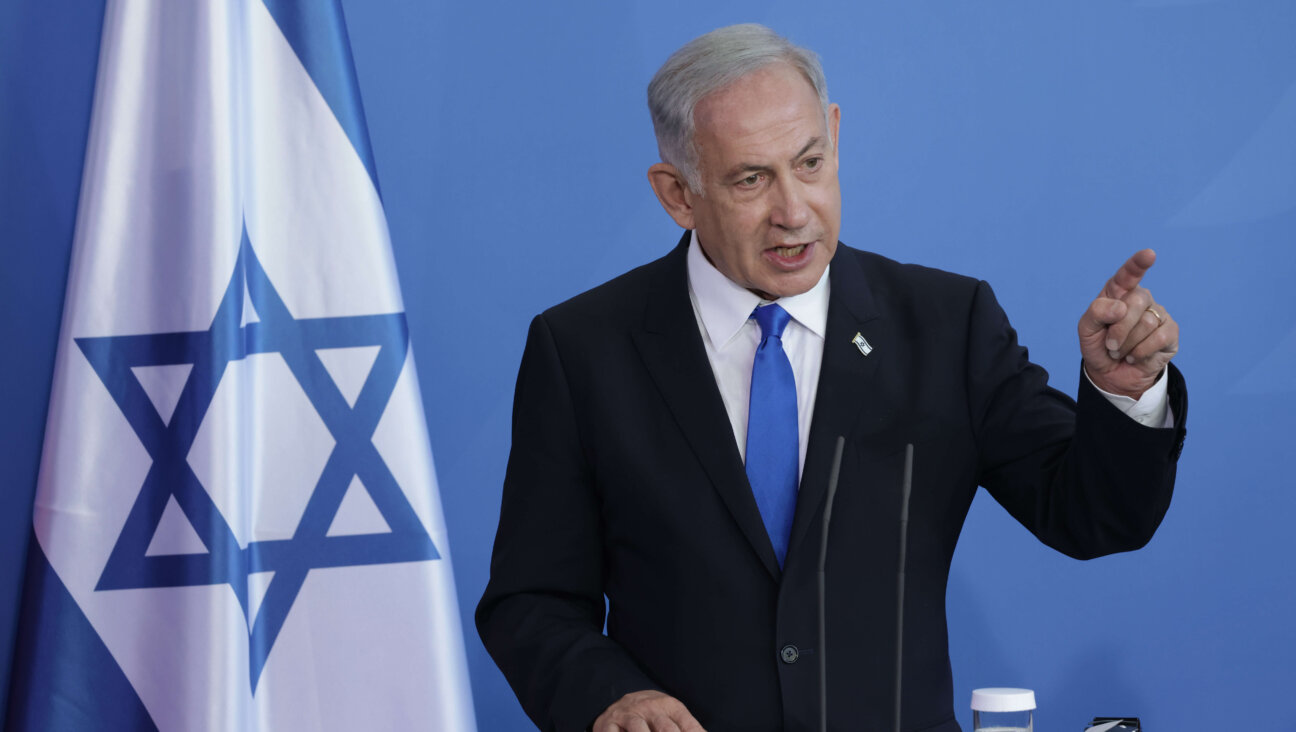Israel’s economy desperately needed the failed GOP bill
The longest war in Israel’s history, combined with judicial overhaul protests and political cronyism is costing Israel dearly

A woman watches as IDF forces arrive to a staging area in the Gaza Envelope for the first time since the Hamas attack, Dec. 17, in Southern Israel. Photo by Alexi J. Rosenfeld
The U.S. House of Representatives failed to pass $17.6 billion of funding in a bill exclusively centered around Israel this week. This is a big loss for the GOP, who tried passing this package as an alternative to a bill that would have included aid to Ukraine, humanitarian assistance to Gaza and immigration reform. If no aid to Israel passes at all in the near future — unlikely, but who knows these days with dysfunctional American politics — this would pose an important challenge for the Israeli economy.
In the past I’ve argued that, while generous, the yearly U.S. aid package of $3.8 billion is helpful but not critical for Israel’s security, as it represents only 1% of its GDP. This time, however, is different.
While Israel’s economy has been historically very resilient to conflicts, especially during previous rounds of military operations in Gaza over the past decade, this war could leave an important mark.
The current conflict with Hamas in Gaza is the longest in Israel’s history, and has come with a staggering cost. The war is estimated to be costing Israel up to 200 billion shekels (over $50 billion), roughly 10% of the nation’s GDP, according to independent estimates coming both from Israel’s ministry of finance and Bank Israel. The one-time aid package floated by U.S. Republicans that got shot down would represent about a third of those costs. Without it, Israel will need to do some combination of raising taxes, borrowing and significantly cutting public expenditures, risking entering an economic downturn not seen in decades.
This particular war is so expensive for Israel because its economic toll is multifaceted, driven not just by military expenditures but by the broader economic distortions it has caused. With 300,000 reservists called up for almost four months, a significant labor force has been sapped from the economy, hindering production capabilities and leading to lost income in many sectors (in turn, resulting in lower profits and thus lower tax revenues). The slowdown in tourism, too, has affected many in the economy.
At the same time, there is need for a significant reallocation and even increase in public spending to support those directly affected by the conflict, including Oct. 7 victims, displaced families from areas under attack in the north and in the south (a number estimated in November to be a quarter of a million Israelis), and struggling businesses, adding another layer of financial strain. This scenario is reminiscent of the economic aftermath of the Yom Kippur War, which precipitated a severe recession and a “lost decade” for Israel, which eventually led to hyperinflation and was only resolved in the early 1980s.
Something else that is different this time around is that Israel entered this war after nine months of unprecedented social unrest due to its government pushing an extremely unpopular judicial overhaul. Nearly a year of protests have left an important scar in the economy, with a significant drop in investments and Israel’s standing deeply affected in the international markets.
The combination of potential credit downgrades due to the judicial overhaul (now paused, but the damage already was done), and heightened global interest rates as a result of central banks combating inflation, complicates Israel’s ability to borrow affordably on international markets. With tax hikes politically unpalatable, even in peacetime, and potentially detrimental to an already struggling economy, Israel’s fiscal flexibility is severely limited right now.
If this wasn’t enough, Israeli politicians in Benjamin Netanyahu’s government are also not particularly acting responsibly when it comes to the budget. If neither borrowing nor raising taxes are real options, one would think they would reduce non-essential expenditures. But in the Israeli political system, the allocation of “pork barrel” funds to projects — many of them really non-essential expenditures — favored by the ruling parties has become critical for maintaining coalition stability.
Even in the midst of the war, the current government continued this practice despite the public outroar. The 2024 budget — recently approved by the cabinet and soon to be voted on by the Knesset — still includes 5.7 billion shekels (about $1.5 billion) of this, out of the 8 billion shekels that were originally planned before the war, due to pre-existing “coalition agreements.” This budget includes, for example, about 750 million shekels for Haredi yeshivas and 280 million shekels for West Bank settlements.
Since Israeli politics have become more and more tribal, and these funds are acting as the glue that keeps political coalitions together, their continued unnecessary allocation of that which doesn’t cover costs of the war is to be expected.
As such, this time around, the importance of a new U.S. aid package cannot be overstated. It could represent a potential lifeline for an Israeli economy at a crossroads. Without it, Israel risks not just immediate economic hardship but a prolonged period of financial instability that could echo the lost decade of the 1970s.
The ongoing debate surrounding whether the U.S. should extend aid to Israel, and the conditions under which it should do so, will remain a prominent topic in headlines and congressional deliberations for the foreseeable future. And while in the long run Israel’s defense needs are not dependent on this aid — contrary to perceptions of some of Israel’s critics — the present circumstances underscore the importance of this one-time supplemental aid package.
I’m not sure if the politicians sitting in the government deserve this financial lifeline, but after the horrors of Oct. 7, the people of Israel absolutely do.
To contact the author, email [email protected].

















